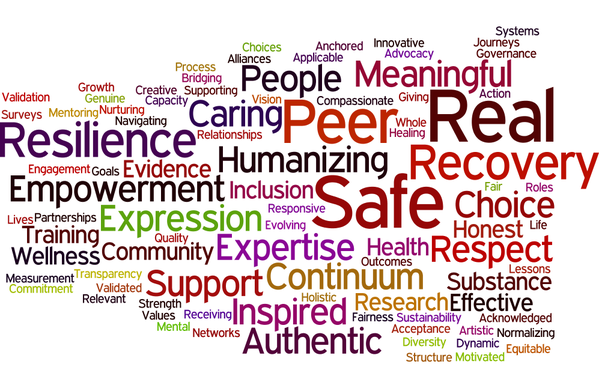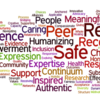I stumbled upon an article called Lesson's learned in developing community mental health care in North America (2012). It grabbed my attention because Eric Latimer from the Douglas Mental Health Centre in Montreal has for years been looking at mental health policy and how it relates to "the ground" and visioning future approaches we might be heading towards.
This article (found in files below) provides an overview on mental health service policy in "North America," though strangely does not include Mexico. Not to get picky, its just that it does a good enough job explaining the unique dynamics of two countries, Canada and the US.
Eric Latimer and Robert Drake, explain the context of these policies and how implemented within the context of the evolving - Canadian universal access to health care and the US's fee for service care systems. The "fee for service" approach is the best way I can describe the US approach at the moment. Anybody who has looked at how much time and energy goes into US mental health organizations, efforts at program billing would appreciate that. I'm a little haunted the same system is creeping into Canada.
The lesson's learned on good practice are in the categories of:
- team based care;
- the recovery model;
- peer support;
- noting high expenses to government if care of people with severe mental illness is neglected;
- the need for effective implementation and supervision of new practices.
Canada's universal access is noted for having substantial institutional/provider barriers to good practices in contrast to the less uniform but more innovative US practices.
For me thinking about ACTT in the Canadian context, I question that the ACTT model and its fidelity measures that we are implementing does not effectively support clients to integrate more easily into the community. Did the US billing system for care set up ACTT as the sole provider, rather than framing client outcomes more closely to helping people to integrate their unique activities and needs within their community? How can the ACTT model strengthen a client's view of themselves, their experience of "recovery, living life" over their life span?
To me, this means ACTT, intensive case management, peer support, hospitals, housing providers, nursing homes, families etc. need somehow to step out of our self fulfilling purpose's to a broader visioned approach of citizenship. This societal approach to understanding the person and their context, would also hone our focus on evidence informed interactions with the people we are helping, shifting expectations.
Ronald Labonte makes an important point in the context of “empowerment” where both client citizenship and personal agency are being advocated for, and the clients themselves needing the direct service and care. He notes:
The two pillars that allow service delivery to be empowering are, first, that is offered in a supportive, non-controlling way and, second, that is not the limit of the resources offered by the agency. The combination of these two pillars has been referred to as “developmental casework.” In contrast to more traditional forms of casework or case management, “developmental casework is developmental, with an explicit goal the development (empowerment) of the individual receiving the support, and the creation of links between these individuals.” This approach builds towards community organizing and coalition advocacy – and hence the political elements of empowerment at the structural level remain explicitly…people have the right, here and now, to support in the face of difficulties… (pg 61)
Health Promotion & Empowerment: Practice Frameworks (1993)
My Framing of ACTT as often operating in a bubble of care does not really capture the day to day work of teams, which are closely supporting people and working to bridge with family, friends; family doctors; housing, education, and welfare providers but it does capture a trend. For sure teams have their unique settings, time and capacity, team style and philosophy. They also have a core purpose to have a helpful relationship with the client, to be a bottom line of support.
I also hear of many teams working in partnership with other organizations or taking a social role valourization http://www.socialrolevalorization.com/ approach. It's just that we need to hear more stories or share more knowledge on how we are putting meat to the bones of the idea of recovery and its many manifestations.



